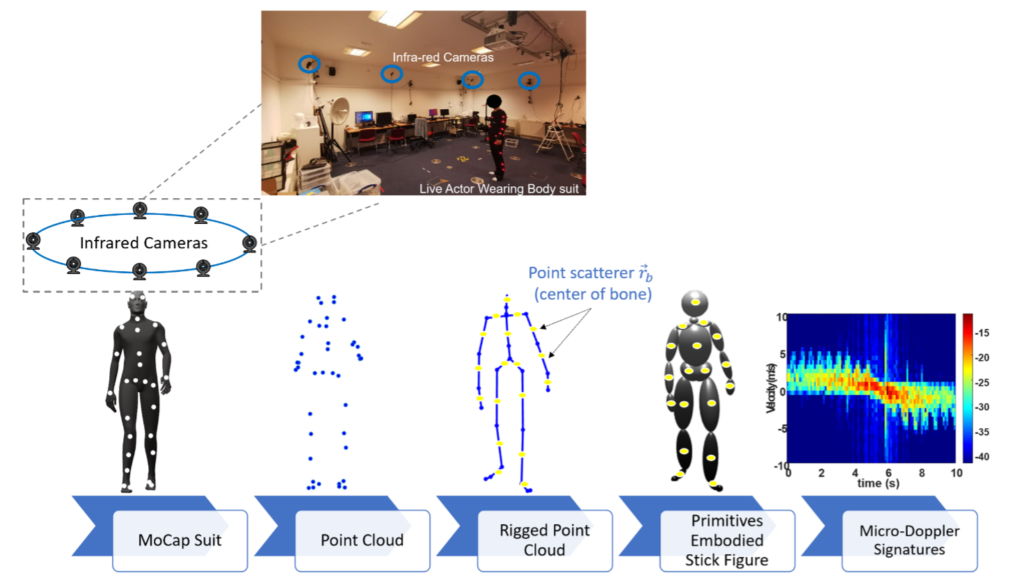
SimHumalator is an end-to-end simulation tool for generating human micro-Doppler radar data. The radar scatterings are simulated by integrating the animation data of humans with primitive shapes based electromagnetic modelling. SimHumalator uses human animation data that is captured using two motion capture technologies- a marker-based motion capture system called PhaseSpace and a marker-less Microsoft’s Kinect v2 sensor system. The PhaseSpace system capture three-dimensional time varying positions of several markers placed on the live actor’s body parts such as head, torso, arms, and legs using eight infrared cameras as shown in Fig.1. The real advantage of using marker-based technology lies in the fact that it can capture more accurate, more realistic, and complex human motions. A Kinect v2 sensor on the other hand uses infrared depth cameras to track the three-dimensional location of the 25 joints on the human body. It can detect up to 6 humans and is very easy to deploy.
We believe simulator will assist the radar and sensing communities to benchmark future algorithms and generate large volumes of high quality and diverse radar datasets.

SimHumalator offers users freedom to select animation data file from eleven healthcare related human motion classes-
- Human standing in a fixed position whilst rotating his body
- Human kicking
- Human punching
- Human grabbing an object
- Human walking back and forth in front of the radar
- Human standing up from chair
- Human sitting down on chair
- Human stand up from chair to walk
- Human walk to sit on chair
- Human walk to fall on ground
- Human standing up from ground to walk
Users can generate a vast simulation database of human micro-Doppler signatures by varying-
- Target motion characteristics (activity type, file number, aspect of the target to the radar, initial position in space)
- Radar operating parameters (different radar configurations monostatic, bistatic-in line, and bistatic circular, waveforms)
- Radar signal processing parameters (such as coherent processing interval (CPI), and pulse repetition interval (PRI)).
Please read reference files for detailed description of the simulation methodology and user guides for familiarising with the simulator.
